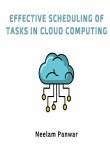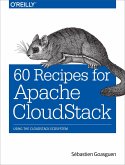Cloud computing is used as a buzzword nowadays. The quotidian growth of data has also contributed to the popularity and wide acceptability of cloud technology. The scale and diversity of the data generated over the internet make it almost mandatory to use cloud services. Cloud computing is capable of delivering a wide variety of services like computing power, storage, networking infrastructure, and software applications. A person can easily avail of these services without getting into details of the underlying cloud technology. It provides everything as a service on demand. In cloud computing, the word cloud is a metaphor for the internet. With cloud computing, anyone can use any type of computing facility through the internet. Cloud computing is an emerging paradigm where all the resources are provisioned rapidly from anywhere using a flexible pricing model. The services provided by cloud computing are based upon pay as you go model. Hence, one needs to pay only for the selected services and the duration for which the service is used. There are various descriptions of cloud computing, but the worldwide accepted definition was given by NIST. "Cloud computing is a model for enabling ubiquitous, convenient, on-demand network access to a shared pool of configurable computing resources (e.g., networks, servers, storage, applications, and services) that can be rapidly provisioned and released with minimal management effort or service provider interaction." Cloud computing is a cost-effective solution for IT infrastructure. With cloud computing, any business can create or customize its applications remotely. Clouds are locationindependent, making the services accessible from anywhere without getting into details. Cloud computing can provide a huge number of resources for computing that are very flexible and scalable. Due to its low IT expenses, high quality, and fast service delivery, cloud computing is highly adopted among IT industries. Organizations can spare themselves from the installation cost of infrastructure and their heavy maintenance. It saves not only money spent on the infrastructure but computing power and storage of local computers, which can be utilized for alternate computing needs. The organizations whose infrastructural requirement changes very rapidly, cloud computing is the most suitable solution. Cloud allows not only the creation of new applications but also provides integration of new facilities with the existing system. Email services are the most common example of the cloud where all the emails are stored in the datacenter's storage and accessible to everybody via the internet. Google Drive is another popular example of cloud storage. Cloud computing services are rolled out using front-end and back-end technologies. The front end consists of application interfaces using which one can access cloud services, and back-end technology manages all the resources used to provide services to the users.








